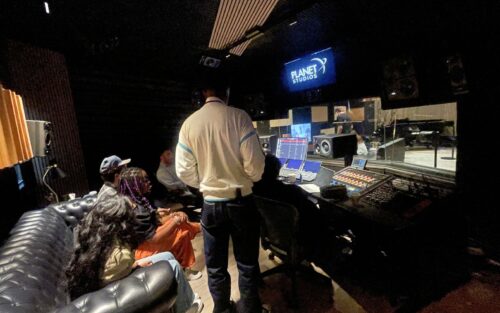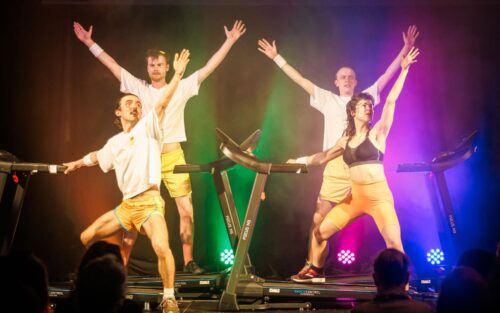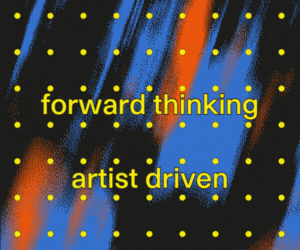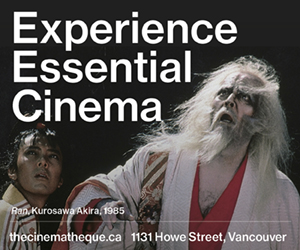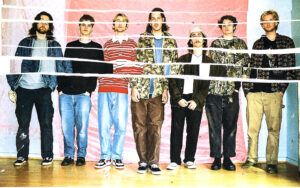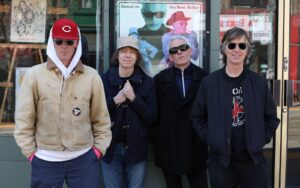
Dune: Part Two Is A Dazzling Epic with Uneasy Ties to Anti-Colonial Cinema
Is Denis Villeneuve’s Style-Over-Substance Sci-Fi Tale Missing the Mark on Difficult Themes?
by Prabhjot Bains
- Published on
With strokes both grand and intimate, Dune: Part 2 casts a spell over audiences. Denis Villeneuve’s staggering sci-fi vision immerses us in its vast desertscapes, brimming with images that will go on to define the Hollywood epic for years to come. Yet, underneath its blinding, seductive sun there are deep and uneasy ties to the anti-colonial epic, which feel especially prescient given its parallels to current conflicts in the Middle East.
Villeneuve’s adaptation of Frank Herbert’s classic novel (which itself was an allegory for Western colonization of the Middle East in pursuit of oil), centres on the power struggles over Arrakis, a desert planet. It’s the only world where spice, a mineral essential to intergalactic travel, can be mined, resulting in an austere and ruthless colonizing power besieging the Fremen, the planet’s native civilization. The nomadic Fremen society Villeneuve captures is heavily steeped in Arab culture, with their guerilla force donning keffiyeh-like scarves while their shamanic women garb themselves in what could only be described as hijabs or niqabs. Their language is also rooted in the flow and tone of Arabic, often feeling more like a rare dialect than a fictional one.
It’s hard not to be reminded of the plight ensnaring the Gaza Strip when their enemies, the pale and synthetic Harkonnen, dub them “rats” and bellow “exterminate them all” while they obliterate their settlements. The image of wounded children and bombed-out ruins only heighten the effect. Whether or not intended by Villeneuve and company, the parallel imbues the film’s spectacle with a provocative edge — one it never fully does justice to.
Dune: Part 2’s fraught links to anti-colonial cinema are more immediately seen in its handling of protagonist Paul Atreides (Timothée Chalamet). Like the “White Saviours” before him, Paul immerses himself in a foreign culture and becomes a symbol of its struggle all the while serving a more personal colonial agenda: restoring the status and power of his fallen royal family. He’s treated like a messianic figure by the Fremen, the chosen one who will lead them to liberation, glory, and power.
Hollywood is flush with stories of settlers who “go native” and pursue the interests of the oppressor, and Dune: Part 2 taps into that narrative vein to both enrich and subvert its hero’s journey. It finds a touchstone in David Lean’s desert-set Lawrence of Arabia, whose similarly blue-eyed protagonist navigates and ultimately leads the Arab Revolt of 1916. Lean’s 1962 epic looms heavy over all of Dune’s 165 minutes, especially with its well-intentioned white saviour, who liberates Bedioun tribes from the clutches of the Ottoman empire only to place them in the hands of the British. Though it’s not rooted in historical fact, Dune’s sci-fi tale wades in the same waters of such colonial epics, at times vividly depicting how a liberator becomes a conqueror.

Despite how textured and transportive the film’s audio-visual design is, this ingrained commentary becomes its most resonant element — for better and for worse. As Paul becomes one with the Fremen, mastering their Sandwalks and Sandworms, he transitions from idealist to tyrant. Paul slowly seizes the Fremen belief system, installing himself as their holy leader and eventually making them cogs in his war of royal reclamation. What were a tribe of loyal freedom fighters are now religious zealots, ultimately leaving the very world they fought to free to serve Paul’s newfound empire.
Stirring moments like these force us to ponder whether Paul is the hero prophecy proclaims him to be. But Dune fails to dig deep enough under its sun-baked sands to dissect Paul as a character, never fully leaning into the flaws that enable his destructive choices. Instead, he becomes little more than a valiant, faultless figure propelled by destiny. Whereas Lean’s film deconstructs Lawrence as both a hero and an egotist, a man who too becomes a victim of the colonial power he serves, Paul is never given the same tragic evaluation. As a result, the seizure and control of the Fremen becomes a consequence of the greater good, where the continued existence of a colonial power is never completely criticized.

Which is likely the result of its clear blockbuster ambitions. In needing to appeal to a broader audience, it assumes a more neutral stance that lacks the same assessment of its immediate influences. Dune never becomes as radical as it portends to be, placing it on an uneasy crossroads within the canon of anti-colonial epics. Both critical and ambivalent about the systems that enable such exploitation.
Yet, for all it does different, Dune falls into the same trap of orientalism as its decades-old predecessors. Arab culture and history are embedded into its very fabric, making it all the more troubling that none of the key roles are played by Arab actors. Like its hero, the film co-opts large sections of Islamic faith and beliefs to ground its narrative but doesn’t take the time to explore or understand them. The Middle East becomes little more than an aesthetic, used to add a thin layer of intrigue to its imposing and intricate visual design. As a result, Dune becomes an example of the very colonialism it seeks to condemn.
Dune: Part Two both subverts and plays into the conventions of anti-colonial epics. In muddling the line between liberator and conqueror, Villeneuve takes his white saviour to task. Yet, in the process, his film also begins to embody him, appropriating a foreign culture to embolden its legacy as an epic for the ages. While Dune’s relevance to current conflicts imbues its sci-fi tale with power, it also highlights its missed potential.
By Glenn Alderson
A deep-listening session reveals how Apple Music’s sonic innovation reshapes the way we hear.
By Cam Delisle
Dominic Weintraub and Hugo Williams take audiences on a treadmill-fueled ride through the chaos and hope of modern life.


